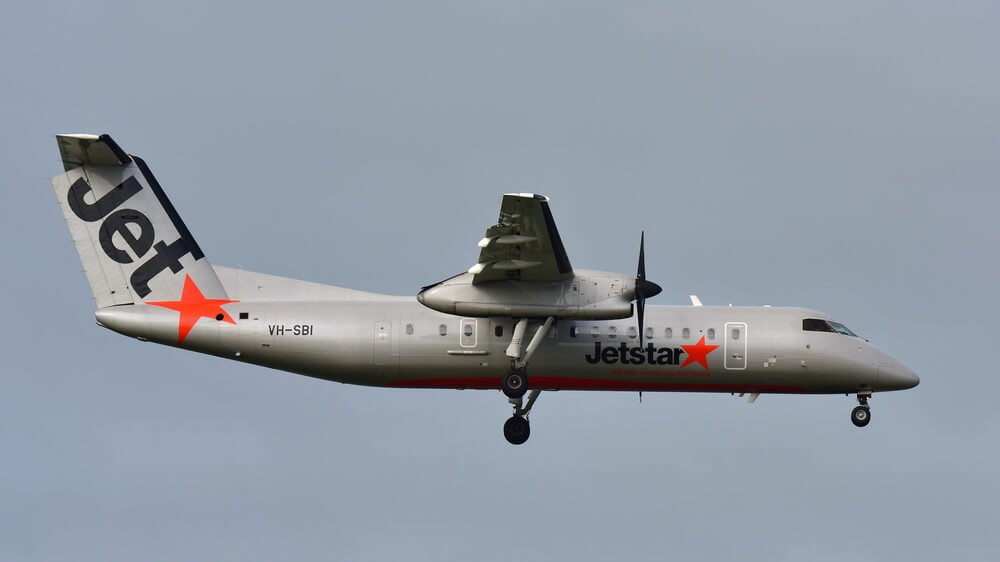The Australia-based low-cost carrier, Jetstar, announced that it is “proposing” cutting regional flights in New Zealand. The flights, operated by a De Havilland Canada Dash-8 Q300, will end on November 30, 2019, due to the fact that Jetstar’s regional network “continues to be loss-making”, according to the Chief Executive Officer of the airline Gareth Evans. The plan is still preliminary, but Jetstar is already looking to provide options for “70 affected employees” and customers who have booked flights after November 30.
The way that the flights are operated is quite complex – Jetstar markets and manages the routes, while QantasLink operates the flights and Qantas-owned Eastern Australia Airlines manages aircraft operations. However, Evans notes that the complexity was not the reason why regional flights are axed, as the “market is facing some headwinds”, Evans said adding that the “softer demand and higher fuel costs” are here to stay.
Jetstar announced the service in June 2015, with first flights commencing in December of the same year. Qantas Group CEO, Alan Joyce, noted that the “community has been calling out for more choice and lower fares on regional routes in New Zealand” as the routes were monopolized by Air New Zealand. Thus the budget carrier, which is a part of Qantas Group, answered “that call by launching Jetstar flights to regional New Zealand” to make regional flying in the region “more affordable for people who live outside the main centres”. Since commencing regional services in 2015, the low-cost carrier transferred “more than 1.3 million passengers” on between regional airports in New Zealand.
It seems that the hero cape that Jetstar tried to put on did not make the enthusiasm last, even if the airline “has given it a real go”. However, another hero has risen to the occasion – Air New Zealand. The flag carrier of the country has announced that it is stepping in and will allow “affected Jetstar customers” to book a “seat-only fare for the same route on the same day” if scheduling aligns with Jetstar’s timetable. The Kiwi airline has promised that flights will cost no “more than $31.6 (NZD50)”. According to Jetstar, 25% of regional flyers “paid less than $31.6 (NZD50)”, while 75% of the passengers had to hand over “under $63 (NZD100)” per flight.
In addition, Air New Zealand Chief Revenue Officer Cam Wallace has pledged to “not increase its lowest lead-in fares” on the routes where they competed with Jetstar “until at least the end of 2020”, if fuel prices are to remain stable. However, Air New Zealand keeping the same capacity if the Qantas Group budget carrier decides to withdraw is questionable. Wallace noted that the New Zealander airline “will evaluate the demand outlook on the affected Jetstar routes” and if its fleet flexibility permits to “add more capacity”.
Jetstar Airways marketed five DHC-Dash 8 Q300 turboprops, which will remain with QantasLink. while Air New Zealand has two regional subsidiaries that together operate ten times more regional aircraft. Air Nelson and Mount Cook Airline both operate flights for Air New Zealand Link, which assumes commercial risks for flights. In total, Air Nelson has 23 De Havilland Canada Dash-8 Q300s, while Mount Cook Airline owns 30 ATR-72 aircraft, according to planespotters.net data.

